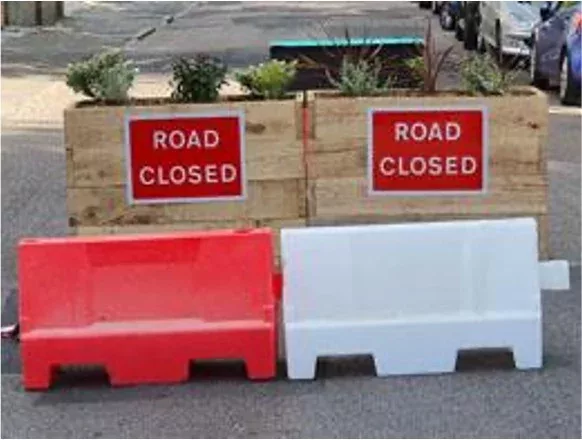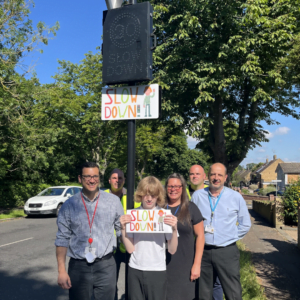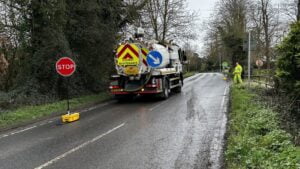Councils that implemented low-traffic neighbourhoods during the pandemic have seen bigger increases in car use than boroughs that did not, according to new government statistics.
Dozens of LTNs, which use bollards, planters or camera enforcement to block through traffic, were introduced in 2020 in a £250 million government package to encourage “active travel”. The schemes were promoted as “climate friendly” and promised to improve air quality, reports The Times.
Yet Department for Transport (DfT) figures show that total vehicle miles driven in the ten inner London boroughs that introduced LTNs or equivalent schemes in 2020 rose by an average of 41 million miles or 11.4 per cent last year as traffic bounced back to more normal levels after the first lockdown.
London’s LTNs are now being copied in cities such as Oxford and Bristol.
The Times asked the DfT whether it knew of any factors other than LTNs that might explain the difference in miles driven between the boroughs but it provided no answer.
While the figures do not prove a link between LTNs and more miles being driven, they could raise concerns the schemes are not as green as claimed.
One criticism of LTNs is that they force drivers to take longer routes. Supporters of LTNs argue this is more than offset by fewer people using cars as they walk or cycle more, a phenomenon they call “traffic evaporation”, said The Times report.
Revisions to historical DfT data also call into question some of the justifications used for inner London’s LTNs. The figures were revised after a complaint about the methodology behind the original estimates.
The initial figures suggested a rise of almost 60 per cent in traffic on London’s minor roads between 2009 and 2019, an increase that was cited by advocates of LTNs to justify closing local roads to through traffic. Many blamed sat-nav apps for the increase. Yet the revised figures now show there was virtually no change in traffic on minor roads over the decade.
The new data also shows that traffic across all roads in each of the ten LTN boroughs was falling before the schemes were introduced. Total vehicle miles driven in these boroughs peaked in 2001 on average and fell by 769 million miles, or 15 per cent, between their peak and 2019. The DfT said LTNs were not introduced just because of traffic. It said: “The figures used at the time were based on the most accurate data available.”
Paul Lomax, who challenged the DfT data, said: “If you’ve got a couple of roads that cut off a corner of a busy main route then stopping that through traffic is legitimate. But when you close off a massive area, the displaced traffic is doing more miles. Traffic evaporation does exist but it is far from total.
“Councils keep shifting the reasons why LTNs are good when each reason becomes flawed. It’s policy based evidence not evidence-based policy.”
Councils insist that traffic data was not the only justification for restricting access to side streets, The Times report went on to say.
Hackney Borough Council has been enthusiastic in its embrace of the policy of low-traffic neighbourhoods (LTNs). In 2020 it used state grants to implement 11 LTNs despite traffic levels in the borough having fallen by 18 per cent, or nearly 65 million miles a year, from their peak in 2002.
At the time, Jon Burke, then the councillor in charge of transport policy in the borough, justified the schemes on the basis that sat-nav apps were increasing the traffic on local roads. He said: “We will no longer allow Silicon Valley billionaires to monetise the value of our residential roads by sending through-traffic along them which they were not designed to accommodate.”
Since then Burke has left the council and the transport department has revised its data, which now shows no increase in traffic levels on London’s minor roads over the past decade.
The council says that it did not rely solely on the department’s data when deciding whether to introduce its LTNs in 2020 and that the recent revision to the data does not change its approach to transport policy. It pointed out that the new LTNs were consistent with its strategy to encourage walking and cycling, address the climate emergency and reduce air pollution.
However, last year, after the introduction of Hackney’s LTNs, vehicle miles driven in the borough rose by 28.7 million miles, or 11.8 per cent, an increase above both the London average and the two inner London boroughs that chose not to implement LTNs or equivalent schemes.
If Hackney’s vehicle miles increased at the same rate as the non-LTN boroughs of Westminster and Kensington & Chelsea, 7.2 million miles of driving could have been saved, reducing nearly 3,000 tonnes of CO2 emissions.
Yet the council remains confident that LTNs are both a success and justified. It said that it had analysed traffic in and around its four biggest LTNs, and this showed a reduction of thousands of vehicle journeys every day, said the Times report.
The council also cited a local poll in which 30 per cent of respondents said they were driving less.





















